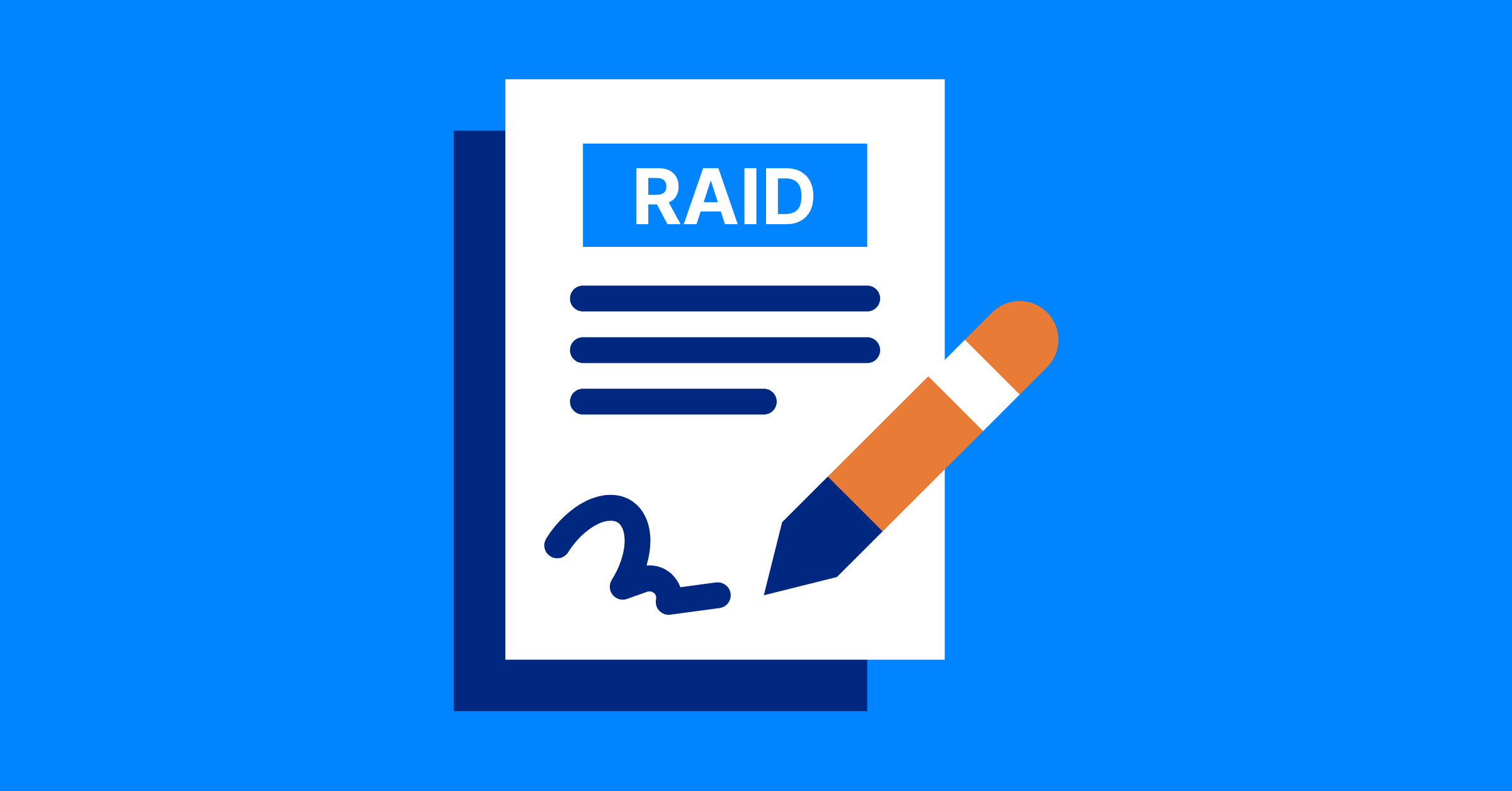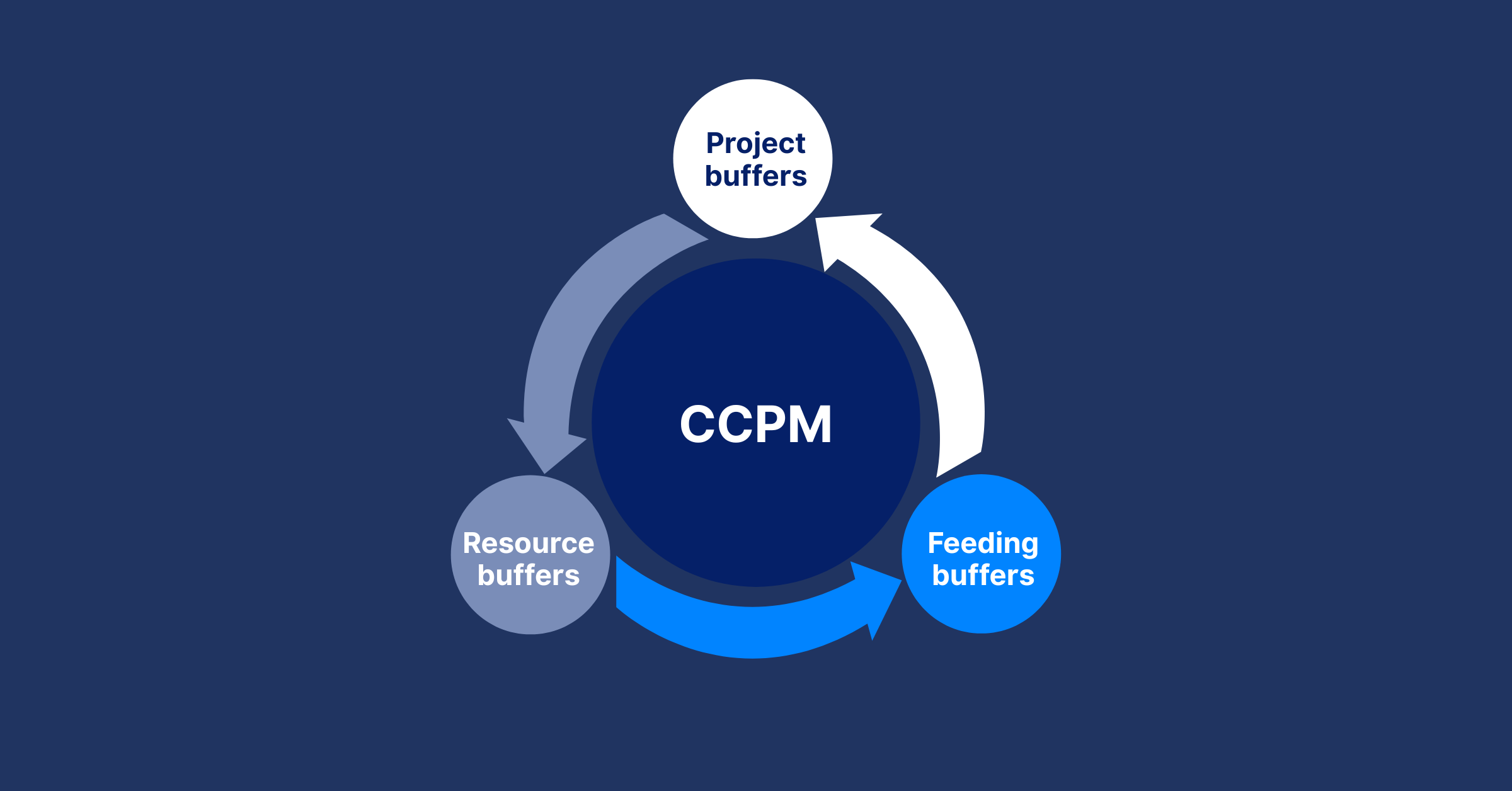Scrum Master vs Project Manager: How These Roles Align and Differ in Agile Projects
Explore the key differences and synergies between Scrum Masters and Project Managers in Agile projects. Learn their responsibilities, focus areas, and how they can collaborate for successful project delivery
Agile project management is all about keeping things fluid, fast, and flexible. But when it comes to the roles of Scrum Master vs Project Manager, things can get a little… muddied. Both play an important part in getting the project from start to finish, but their roles often collide in the most unexpected ways. Who’s in charge of what? Who handles the problems that pop up? And how do they both make sure the project stays on track?
In this blog, we’re going to clear up the confusion once and for all. We’ll explore the differences between the Scrum Master and the Project Manager roles, show you how they can work together (and why they should), and offer a practical guide to making both roles shine. So, whether you’re a Scrum newbie or a Project Manager trying to transition into Agile, we’ve got you covered.
The Agile Framework in Brief
Before we dive deeper into the roles of Scrum Master and Project Manager, it’s important to quickly revisit the core of Agile. After all, understanding these roles means understanding the context in which they operate.
Agile is all about flexibility, delivering value incrementally, and fostering collaboration. Scrum, a popular Agile framework, organizes work into short, focused cycles called Sprints, which typically last one to four weeks.
If you're new to Agile, you can also check out our blog on What is Agile Project Management? for a deeper dive into the methodology.
In Scrum, there are three key roles:
- Product Owner: Represents customer needs and prioritizes the work.
- Development Team: Executes the tasks, designing, coding, and testing.
- Scrum Master: Facilitates Scrum practices, ensuring the team stays focused and productive.
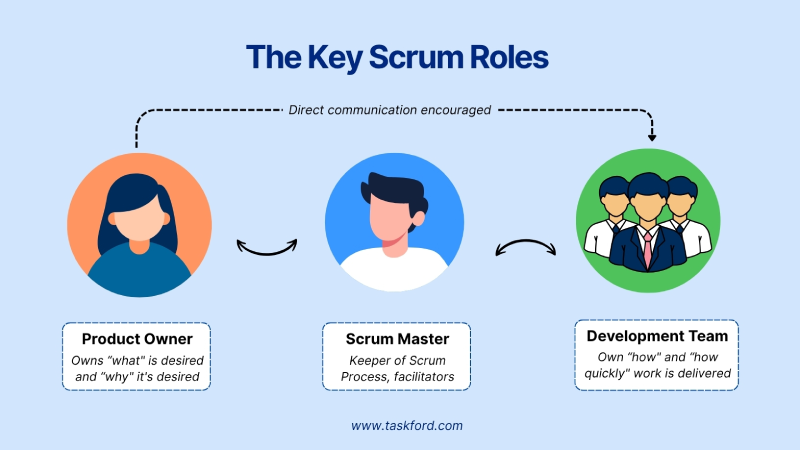
While Scrum doesn’t formally include a Project Manager, many organizations still use this role in parallel with Agile teams. The Project Manager typically handles high-level project coordination, managing resources, timelines, budgets, and stakeholder communication, ensuring the project as a whole stays on track.
This context helps explain how Scrum Master and Project Manager both play important but distinct roles in delivering successful projects. Let’s break them down next.
What is a Scrum Master?
The Scrum Master plays a unique role in Agile projects. Unlike a traditional manager, the Scrum Master is more of a servant leader who focuses on guiding the team and ensuring that the Scrum framework is followed effectively. Their goal is to help the team perform at its best by removing obstacles, fostering collaboration, and facilitating continuous improvement.
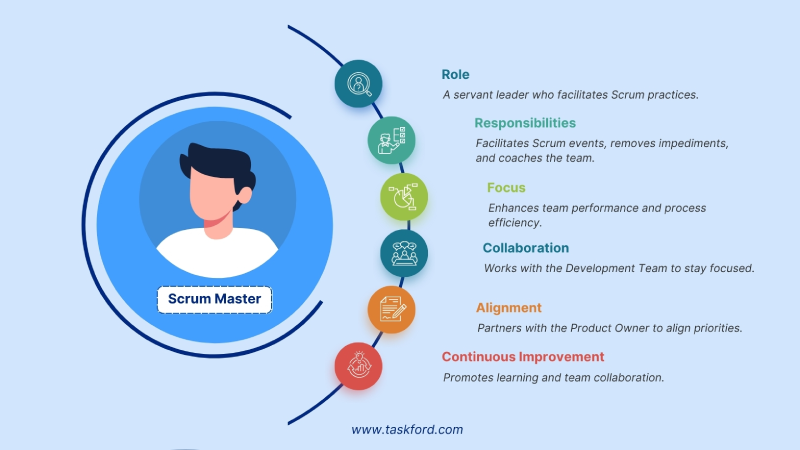
Key Responsibilities:
- Facilitating Scrum Events: The Scrum Master ensures key Scrum ceremonies like Daily Standups, Sprint Planning, Sprint Reviews, and Retrospectives run smoothly and are productive.
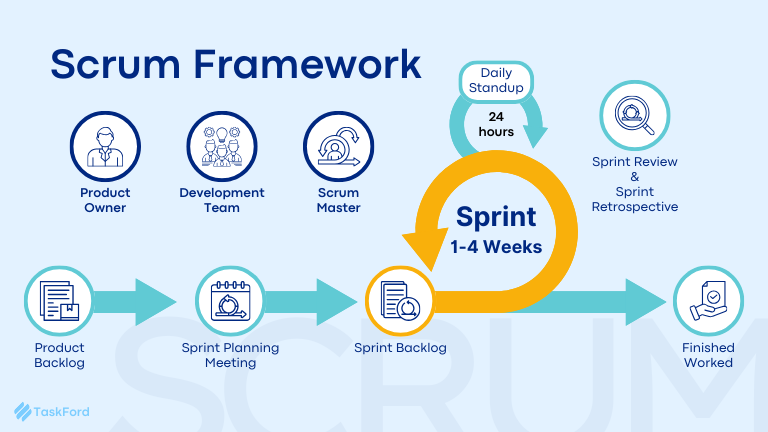
If you're curious about how the Sprint cycle works in more detail, check out our post on the Agile Project Management Sprint Cycle.
- Removing Team Impediments: They identify and eliminate obstacles that prevent the team from achieving their goals, whether it’s an issue with resources, tools, or team dynamics.
- Coaching the Team on Agile Principles: The Scrum Master helps the team understand and implement Agile principles, encouraging continuous improvement and fostering a collaborative environment.
Primary Focus:
The Scrum Master is mainly focused on improving team performance and process efficiency, ensuring that the Scrum framework is followed and that the team works smoothly.
Works Closely With:
- Developers: They support the development team, helping them stay focused and removing any roadblocks that hinder their progress.
- Product Owner: The Scrum Master works alongside the Product Owner to ensure the backlog is well-managed and that the team understands their priorities.
In summary, the Scrum Master’s role is to help the team operate efficiently within Scrum by removing obstacles, facilitating communication, and promoting continuous improvement.
What is a Project Manager?
A Project Manager is a key role in traditional project management and, in some cases, Agile environments. Unlike the Scrum Master, who focuses on team processes and Agile principles, the Project Manager is responsible for overseeing the overall project delivery. They ensure that a project is completed on time, within budget, and meets the defined scope.
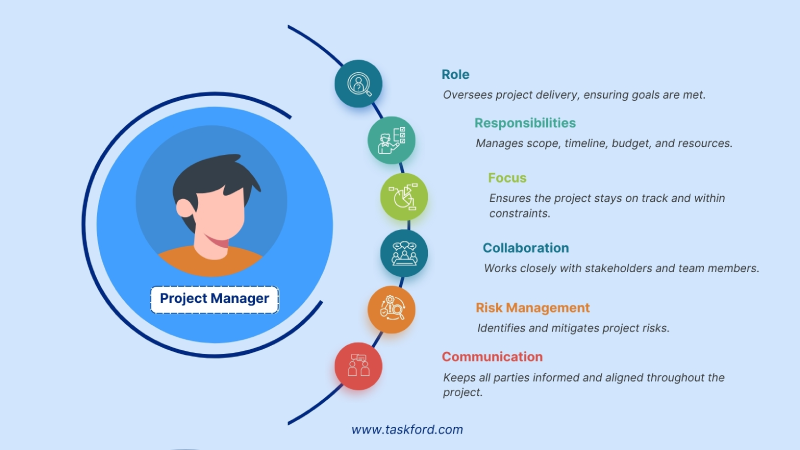
Key Responsibilities:
- Scope Management: The Project Manager defines the scope in project management, ensuring that all project objectives are clear and achievable.
- Time and Budget Management : They develop and manage timelines, making sure the project stays on schedule and within budget, while adjusting for any changes that might arise.
- Stakeholder Communication: The Project Manager serves as the main point of contact for stakeholders, providing updates on project status, risks, and milestones.
- Risk Management: They proactively identify potential risks to the project and develop strategies to mitigate those risks before they affect the project.
- Resource Management: Ensuring that the right resources (people, tools, materials) are available when needed.
Primary Focus:
The Project Manager’s main focus is on delivering the project successfully. They manage timelines, budgets, resources, and external communication, ensuring the project stays on track and meets its goals.
Works Closely With:
- Stakeholders: The Project Manager maintains communication with all stakeholders, ensuring that their expectations are aligned with project goals and progress.
- Team Members: They coordinate team activities and ensure that resources are allocated efficiently to keep the project moving forward.
While the role of a Project Manager may seem more traditional, it’s still crucial in ensuring that a project is delivered successfully, whether in a Waterfall, Agile, or hybrid environment.
For a deeper dive into the role of a Project Manager, check out our blog: What Does A Project Manager Do?
Additionally, if you want to explore the different types of Project Managers and their unique responsibilities, be sure to read our blog: Types of Project Managers
Key Differences Between Scrum Master and Project Manager
While both the Scrum Master and Project Manager are integral to a project’s success, their roles, responsibilities, and focus areas differ significantly. Understanding these differences will help you clarify who does what on your team, allowing for better collaboration and a smoother project delivery.
Here’s a breakdown of their key differences:
| Aspect | Scrum Master | Project Manager |
|---|---|---|
| Role Focus | Facilitates Scrum processes and team health | Manages overall project delivery (scope, time, cost) |
| Authority | Servant leader, no formal authority over team | Has formal authority over the project, stakeholders, and resources |
| Key Responsibilities | Removes obstacles, coaches, and facilitates ceremonies | Manages scope, budget, and schedule, and communicates with stakeholders |
| Team Interaction | Works directly with the development team to improve performance | Works with stakeholders and project teams to align goals and deliverables |
| Approach | Focus on team collaboration and process improvement | Focus on project execution and achieving project objectives |
| Tools Used | Scrum board, burn-down charts, velocity tracking | Gantt charts, project dashboards, and resource allocation tools |
| Stakeholder Involvement | Limited to the Scrum team, Product Owner, and some stakeholders | Directly interacts with all stakeholders to manage expectations |
Why They Are Different:
- The Scrum Master is primarily a facilitator and coach, ensuring the team follows Agile principles and that Scrum processes are properly implemented. They focus on making the team function more effectively and resolving any issues that hinder team performance.
- The Project Manager, on the other hand, is a strategic overseer who controls the project's scope, timeline, and budget. They are responsible for aligning the project with business objectives, managing resources, and ensuring that stakeholders are informed and satisfied throughout the project lifecycle.
Why They Are Aligned:
- Both roles are ultimately focused on successful project delivery—they just approach it from different angles. The Scrum Master ensures the team is optimized and works well together within the Scrum framework, while the Project Manager ensures the broader project goals are met, managing external factors like resources and stakeholders.
How These Roles Can Work Together
Despite their differences, the Scrum Master vs Project Manager can collaborate effectively when their roles are clearly defined.
- Collaboration: The Scrum Master can help the Project Manager by ensuring the team works smoothly and efficiently, addressing internal issues, and providing real-time data on team performance. The Project Manager can support the Scrum Master by managing external resources, ensuring the team has what it needs to succeed.
- Clear Boundaries: When these roles are defined properly, the Scrum Master focuses on the team and the process, while the Project Manager focuses on the broader project delivery. This avoids role confusion and promotes smoother teamwork.
By understanding and respecting the distinction between the two roles, Agile teams can ensure both their internal processes and project outcomes are optimized.
Can One Person Be Both?
In some organizations, particularly smaller teams or startups, it might make sense for one person to take on both the Scrum Master vs Project Manager roles. However, combining these roles comes with its own set of challenges and considerations.
When It’s Possible
- Small Teams or Startups: In environments with limited resources, combining roles can help streamline processes and reduce overhead.
- Hybrid Frameworks: Teams using a blend of Agile and traditionalproject management(like Scrum-ban or Agile-Waterfall) may find it practical for one person to manage both aspects.
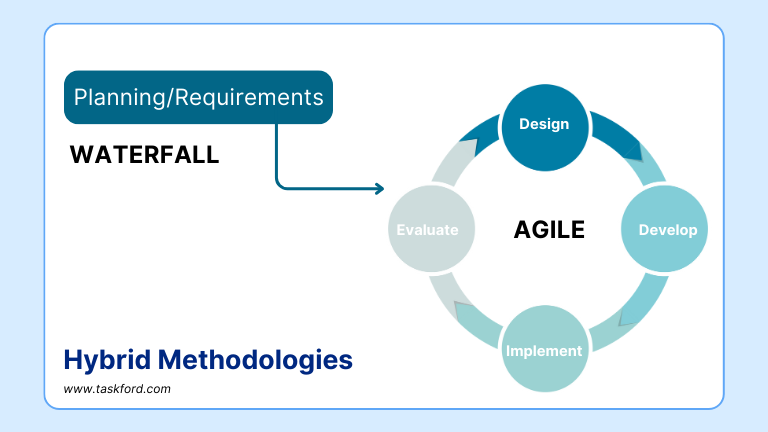
Challenges to Consider
- Conflicting Priorities: The Scrum Master focuses on team processes and continuous improvement, while the Project Manager manages scope, budget, and timeline. Balancing these can be difficult without role confusion.
- Risk of Overload: Juggling both roles can lead to burnout and a lack of focus. The individual might struggle to meet the demands of both internal team facilitation and external project coordination.
- Impact on Team Autonomy: If the same person is managing both the team and the project’s external aspects, it could hinder the team’s ability to self-organize and make independent decisions.
Best Practices for Combining Roles
- Clear Role Separation: When taking on both roles, it’s important to clearly separate responsibilities and prioritize what needs attention at any given time.
- Frequent Check-Ins: Regular communication with the team and stakeholders helps ensure nothing falls through the cracks.
- Support and Backup: Having someone to support or step in during critical moments can help prevent burnout and ensure both roles are fulfilled effectively.
In summary, while it’s possible for one person to take on both roles, it requires careful balancing and clear boundaries to be effective. If both roles are combined, the individual must be prepared to manage the demands of both the team and the project without compromising quality or performance.
Conclusion
The Scrum Master vs Project Manager have distinct but complementary roles in Agile projects. The Scrum Master focuses on team processes and continuous improvement, while the Project Manager oversees project delivery, timelines, and resources. When clearly defined, these roles can work together to drive both team performance and project success. Understanding their differences and synergies ensures smoother collaboration and more effective project outcomes.
Related Blogs:
- Program Manager vs Project Manager? Roles, Responsibilities, and Where They Overlap
- How to Prioritize Sprint Backlogs: Who Is Accountable for Decisions?
- Marketing Project Manager Responsibilities, Skills, and Real Impact
- Enterprise Resource Planning (ERP)
- what is a Gantt Chart Everything you need to know in 2025
Making work simpler,
smarter, and more connected
Join our waitlist and be notified first.

Related Blog
Subscribe for Expert Tips
Unlock expert insights and stay ahead with TaskFord. Sign up now to receive valuable tips, strategies, and updates directly in your inbox.




